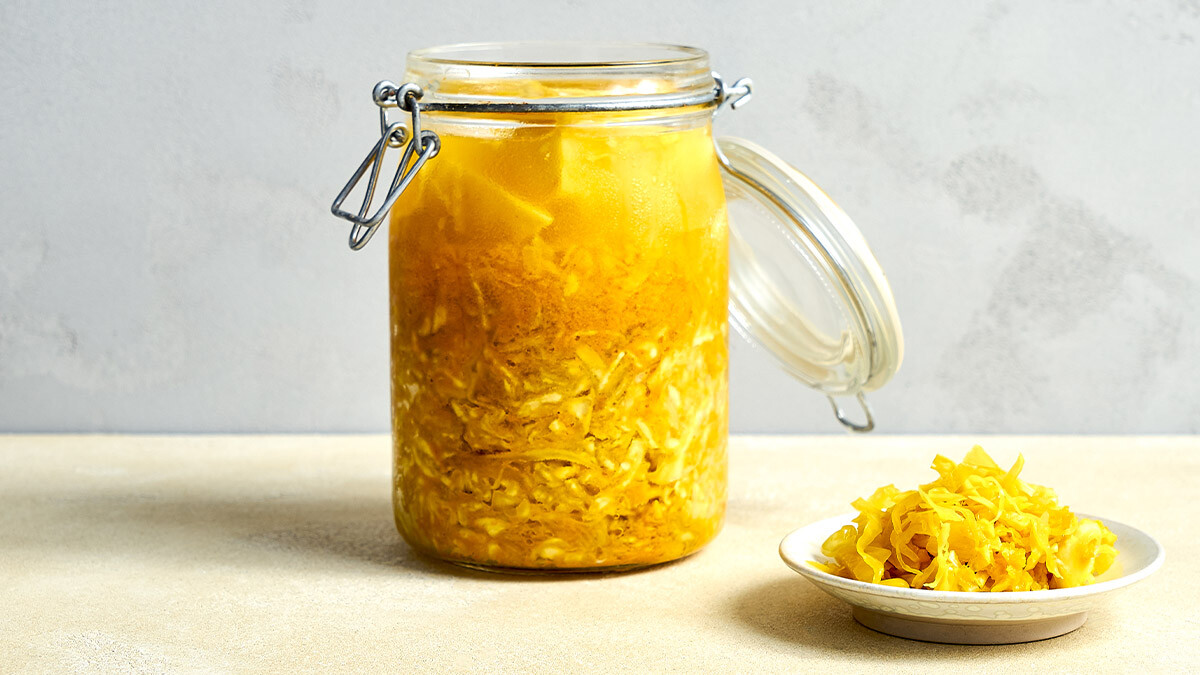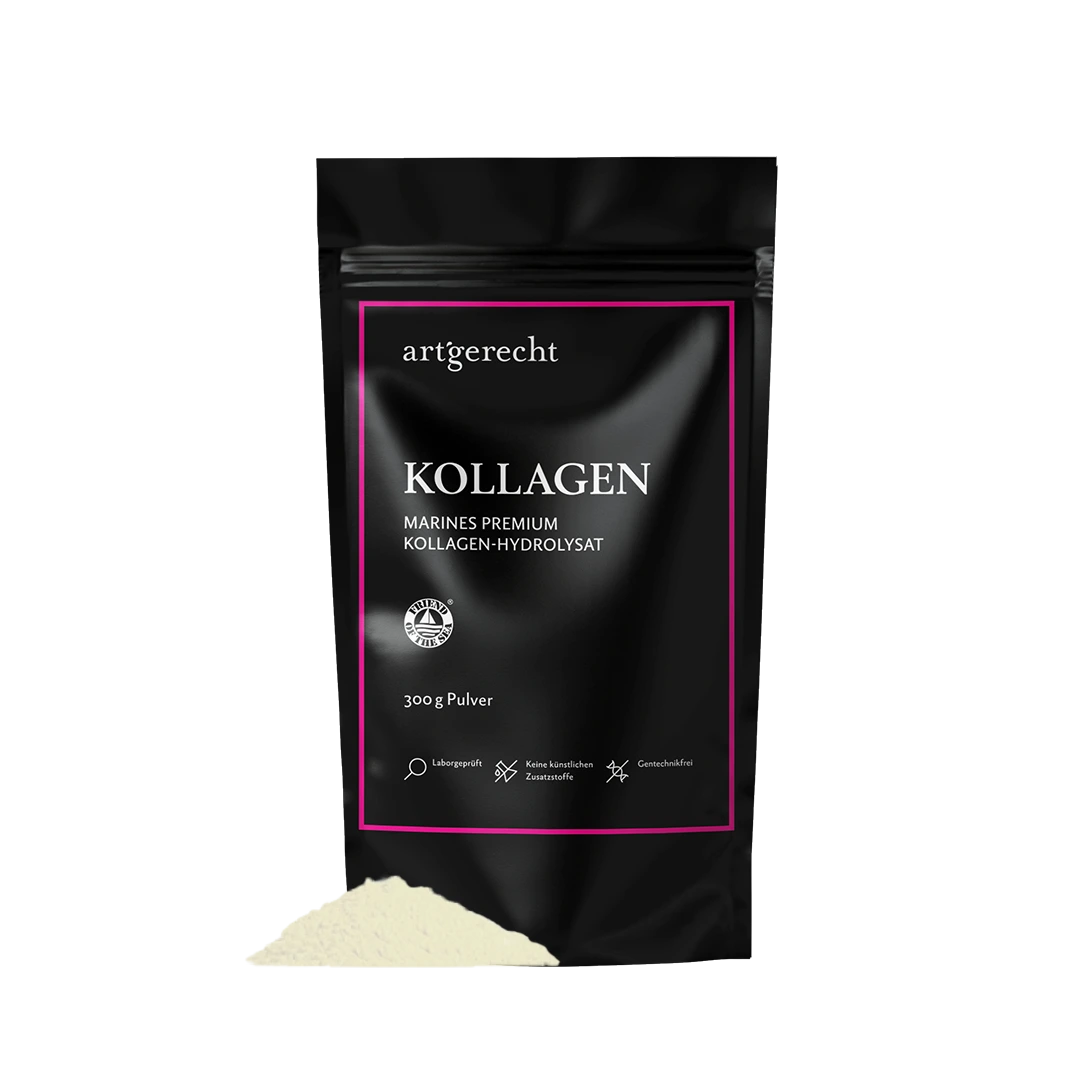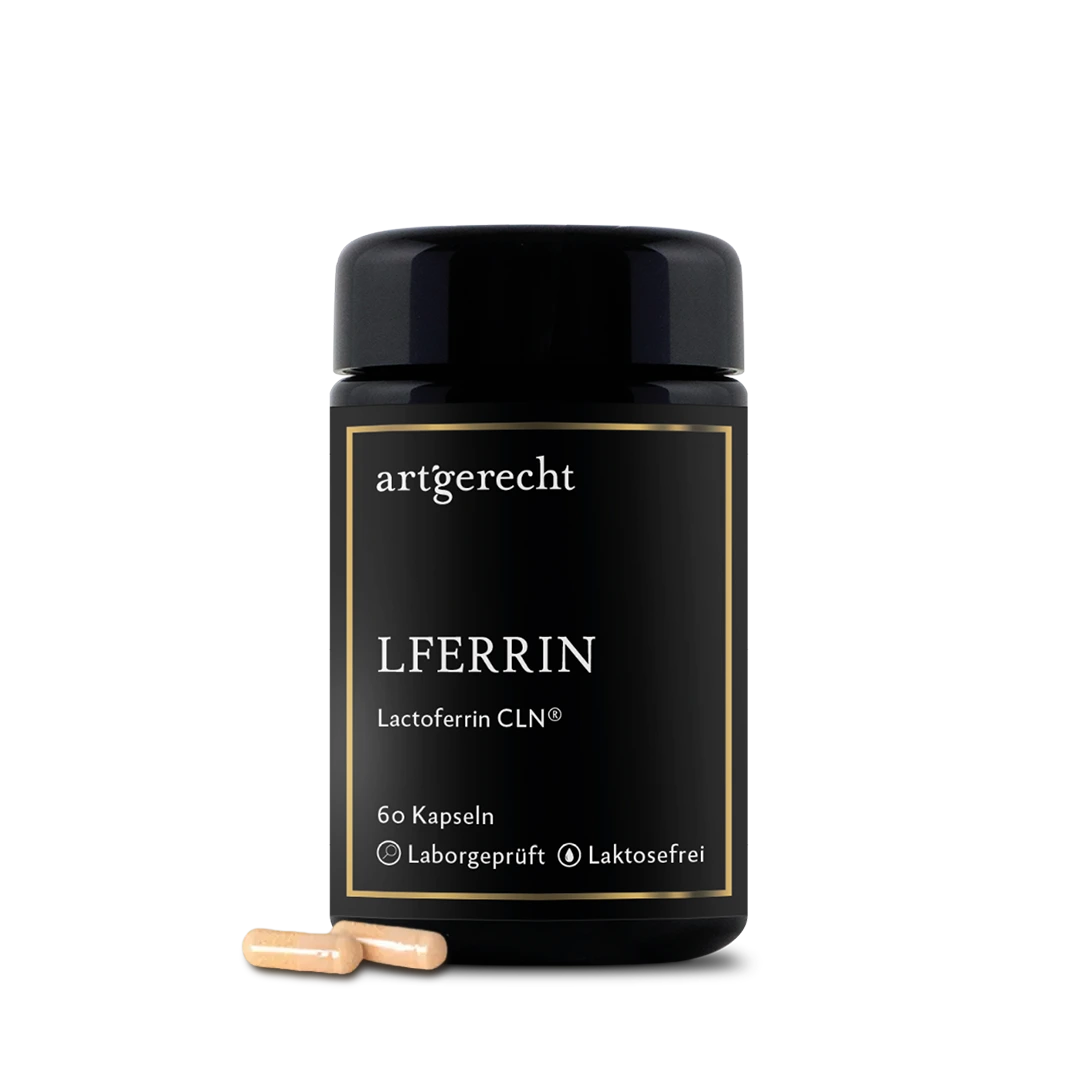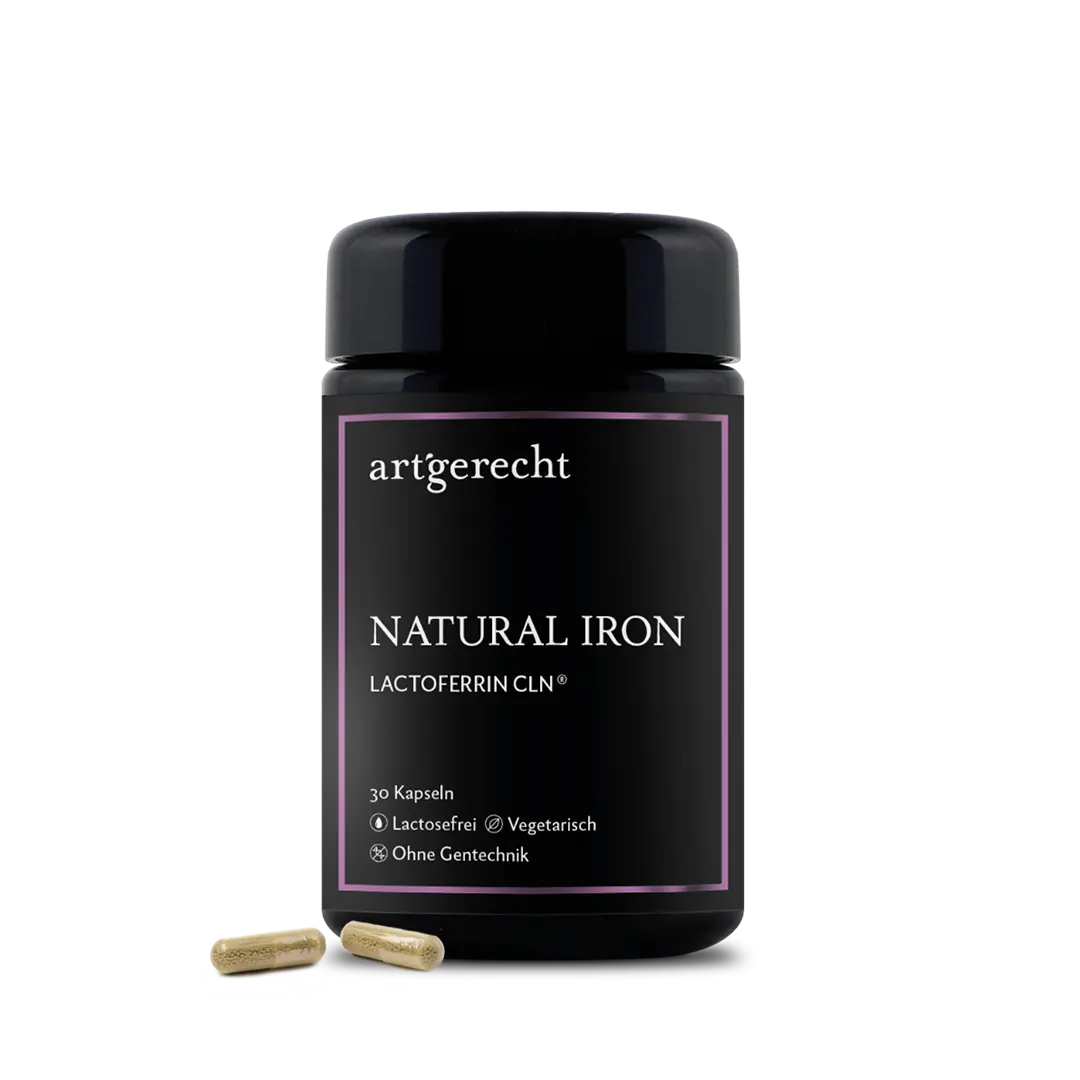Fermented products are very popular around the globe. The technique of fermentation has been with us for millions of years. To this day, fermented vegetables can be found all over the world in a wide variety of forms: Sauerkraut in Germany, kimchi in Korea or tsukemono and miso in Japan, are just some of the countless varieties. Why are fermented foods so popular?
Why are foods fermented?
The word fermentation comes from the Latin verb fermentare, which means to make ferment, swell”. During our evolution, fermentation was part of a survival strategy to make food last longer, intensify its flavor and enhance its quality. Fermented foods still play an important role in species-appropriate nutrition today. They are not only delicious, but also offer incredible benefits for our health and well-being.
Types of fermentation:
- With microorganisms: We often use bacteria (e.g. lactic acid bacteria) or fungi to convert food during fermentation. These microorganisms in turn use special enzymes that they produce themselves to convert sugar into other substances (e.g. vinegar or lactic acid).
- Without microorganisms: Another option is wild fermentation, in which only vegetables are used, without the addition of microorganisms. This is because the bacteria „basically already sit“ on the vegetables and are sufficient to initiate fermentation.
Nature at work
There are different types of microorganisms that are responsible for fermentation:
- Bacterial enzymes (e.g. sauerkraut, yogurt)
- Mould enzymes (e.g. cheese)
- Yeast enzymes (e.g. Kombucha, sourdough bread, kefir, beer)
Fermentation occurs when microorganisms manage to enter food cells and break through their cell walls in order to supply themselves with food (sugar).
Once this has happened, the process of transformation begins. If the bacteria multiply and spread quickly, a stable ecosystem is created. Pathogenic or harmful germs are prevented from entering (competition exclusion principle). The addition of salt, the correct fermentation temperature and the anaerobic (without oxygen) environment further favor this condition. This allows the fermented food to be stored safely and for a long time.
The taste
Fermentation is more than just preservation. This process changes the consistency and aroma of the respective food and can be presented in surprising new variations through the creative use of ingredients and spices. Fermented foods give dishes their own characteristic flavor – „that certain something“, which activates the millennia-old taste senses of our brains in a special way.
Let the bacteria work for you – and enjoy the results.
What can you ferment?
The classic way would be to preserve seasonal vegetables for the winter by fermenting them. In principle, there are no limits to your imagination and the courage to experiment is rewarded with new aromatic experiences. As the surfaces of the vegetables already contain lactic bacteria (especially from organic farming), only a few ingredients are needed.
The easiest way to ferment solid vegetables that have a low water content, such as cabbage, cabbage, carrots, fennel or beetroot. In principle, however, any vegetables or fruit can be used. Of course, there are also countless other variants of fermentation, such as Kombucha (fermentation with Scobya symbiotic mixture of yeast and bacteria that feeds on tea and sugar) or dairy products (yoghurt) and even fish.
What is healthy and species-appropriate about fermented foods?
It's simple: the bacteria in our gut love fermented foods. Because we are far from alone… Huge quantities of microorganisms, such as bacteria, viruses, parasites and fungi, live in and on our bodies, in the air or on our food. The human ecosystem needs the right food to stay in balance.
Our intestines alone are populated by a large number of different types of bacteria, the composition of which has an enormous impact on our nutritional and health status. Which bacteria are present and in what numbers is subject to constant fluctuation and has a lot to do with our daily diet and lifestyle. [1]
If there is an imbalance here, this can lead to a wide variety of symptoms and clinical pictures. Our immune system in particular is quickly affected by this [2]. However, those who regularly eat fermented foods ensure a stable foundation for their internal immune system and thus lay the foundation for their health.
The benefits of fermented foods:
- Natural toxins and undiluted substances are reduced.substances are reduced [3]
- Pathogens (harmful microorganisms) in the body are inhibited [4]
- Food becomes more easily digestible
- Antioxidative processes in the cells are supported (anti-ageing effect) [5]
- Increased absorption of vitamins and minerals from food [6] [7]
- Probiotic bacteria support our intestines and our immune system [8]
// Ad 5: Increased intake of vitamins and minerals
Important nutrients such as vitamins and minerals may be present in food, but are often only partially absorbed by the body. This is called low bioavailability, as they are ultimately not available to the body. Fermentation allows these so-called micronutrients, such as iron [6] and zinc [9] are released and thus achieve significantly higher bioavailability .
// Re 6: Probiotic bacteria for our gut
The other major health-promoting mechanism of action is based on the „good bacteria“, the so-called probiotics, which are contained in fermented products. This effect can be scientifically proven and has been studied in a wide variety of diseases.
These include:
- Allergies [10]
- Atherosclerosis [11] [12] [13]
- Alzheimer's disease [11] [12] [13]
- Heart attack [11] [12] [13]
- Depression and mental health [14]
- Diabetes and metabolic diseases [15]
- Diarrheal diseases [16] [17]
- Helicobacter pylori infections [18]
- Cancer prophylaxis [19] [20]
- Lactose intolerance [21] [22] [23]
- Irritable bowel syndrome [24]
- Rheumatoid arthritis [25]
Good to know:Fermentation is probably the gentlest cooking method to remove substances (goitrogens) that inhibit the production of thyroid hormones from plants such as cabbage vegetables [26].
In general, probiotics can help with weakened immune defenses [27] and stress [28].[28] are recommended as supportive measures – and, if we are honest, that applies to most of us.
Expand your nutritional repertoire and support your microbiome
What is needed for fermentation?
You need these ingredients for the fermentation of food:
- Salt
- A jar with a lid
- A weight to press the ferment down
How exactly is fermentation done?
Tips and tricks for fermentation:
- Always ensure thorough hygiene (rinse and rinse the container thoroughly and hot), otherwise the entire ferment may rot or go mouldy. You will recognize this immediately by the smell.
- Do not use metal containers! During fermentation, the pH value becomes lower, which means the ferment becomes more acidic and metal can corrode. This results in an unpleasant taste, an unpleasant color and the bacteria work less well. It is better to use jars made of glass or stainless steel.
- Use fresh and undamaged vegetables. Organic vegetables have the advantage that they contain more lactic acid bacteria, which drive the process forward.
- The use of iodized salt and salt with anti-caking agents and separating agents should be avoided.
- In order to keep the vegetables under water during fermentation, they should be weighted down, otherwise the gases will push the vegetables upwards. There it would come into contact with oxygen. With anaerobic fermentation, it is important that the mixture is under liquid for the entire fermentation process.
- The container should be kept in a dark place at approx. At approx. 18°C (ideally 10-15°C).
- The longer the vegetables ferment, the more intense the flavor becomes. The optimum period is 2-3 weeks.
What are simple recipes for fermentation?
- Sour cucumbers (see below)
- Apple-pineapple vinegar
- Turmeric sauerkraut
- Wild cabbage kimchi
Recipe: Sour cucumbers
Ingredients
- Jar with 1 liter capacity
- 1 tbsp coriander seeds
- 1 stalk of lemongrass, pounded flat with the back of a knife
- ./li>
- 1 thumb-thick piece of ginger, thinly sliced
- 2 whole garlic cloves
- 3 bay leaves
- 1 smoked dried jalapeno (optional)
- 1 tbsp probiotic powder
- Small cucumbers (farm gherkins / mini cucumbers), as many as needed to fill the jar
- 1 l water
- 35 g salt
Preparation
- First add all the spices and the probiotic to the jar, then fill the jar with the cucumbers.
- Mix 1 l of warm water with 35 g of salt to make a 3.5% brine. Pour the brine over the cucumbers so that they are completely covered.
- Seal the jar and leave to rest for 5 days until it can be opened and tasted. It should now taste sour.
- After 5 to 10 days, the jar can be stored cold. Between 5°C and 15°C is optimal, i.e. between refrigerator and cellar temperature. The vegetables tend to become crispier in the fridge, while complex umami flavors develop more quickly in the cellar*
.umami is an additional flavor, in addition to the familiar sour, sour, bitter and salty flavors. It comes from the Japanese and describes a hearty, intense, meaty taste.
TIPS:
- This special 3.5% brine can be used for various firm vegetables, such as cauliflower, kohlrabi, turnips, beet, radishes, etc.
- The remaining liquid in the preserving jar can be used for salad dressings or as a marinade
- The use of iodized salt and salt with anti-caking agents and anti-caking agents should be avoided.
INFO: Trübe cucumbers? – don't panic!
These are usually harmless lactic acid bacteria and/or are caused by limescale in tap water.
Literature:
- Spreadbury I. Comparison with ancestral diets suggests dense acellular carbohydrates promote an inflammatory microbiota, and may be the primary dietary cause of leptin resistance and obesity. Diabetes, Metabolic Syndrome and Obesity: Targets and Therapy 2012; 5: 175–189.
- Belkaid Y, Hand TW. Role of the microbiota in immunity and inflammation. Cell 2014; 157: 121–141.
- Bisanz JE, Enos MK, Mwanga JR, Changalucha J, Burton JP, Gloor GB, Reid G. Randomized open-label pilot study of the influence of probiotics and the gut microbiome on toxic metal levels in Tanzanian pregnant women and school children. mBio 2014; 5: e01580-14.
- Corr SC, Hill C, Gahan CGM. Chapter 1 Understanding the Mechanisms by Which Probiotics Inhibit Gastrointestinal Pathogens. In: Taylor SL (ed.). Advances in food and nutrition research. Volume 56 1–15. 1st ed. Academic Press, Amsterdam, Boston, 2009.
- Verni M, Verardo V, Rizzello CG. How Fermentation Affects the Antioxidant Properties of Cereals and Legumes. Foods 2019; 8.
- Scheers N, Rossander-Hulthen L, Torsdottir I, Sandberg A-S. Increased iron bioavailability from lactic-fermented vegetables is likely an effect of promoting the formation of ferric iron (Fe3+). European Journal of Nutrition 2015; 55: 373–382.
- Nkhata SG, Ayua E, Kamau EH, Shingiro J-B. Fermentation and germination improve nutritional value of cereals and legumes through activation of endogenous enzymes. Food science & nutrition 2018; 6: 2446–2458.
- Yan F, Polk DB. Probiotics and immune health. Current opinion in gastroenterology 2011; 27: 496–501.
- Lazarte CE, Vargas M, Granfeldt Y. Zinc bioavailability in rats fed a plant-based diet: a study of fermentation and zinc supplementation. Food & Nutrition Research 2015; 59.
- MAJAMAA H, ISOLAURI E. Probiotics: A novel approach in the management of food allergy☆☆☆★★★. Journal of Allergy and Clinical Immunology 1997; 99: 179–185.
- Laparra JM, Sanz Y. Interactions of gut microbiota with functional food components and nutraceuticals. Pharmacological research 2010; 61: 219–225.
- Hsu R-L, Lee K-T, Wang J-H, Lee LY-L, Chen RP-Y. Amyloid-degrading ability of nattokinase from Bacillus subtilis natto. Journal of agricultural and food chemistry 2009; 57: 503–508.
- Correspondence. Atherosclerosis 1998; 137: 437–438.
- Selhub EM, Logan AC, Bested AC. Fermented foods, microbiota, and mental health: ancient practice meets nutritional psychiatry. Journal of Physiological Anthropology 2014; 33: 2
- Rad AH, Abbasalizadeh S, Vazifekhah S, Abbasalizadeh F, Hassanalilou T, Bastani P, Ejtahed H-S, Soroush A-R, Javadi M, Mortazavian AM, Khalili L. The Future of Diabetes Management by Healthy Probiotic Microorganisms. Current diabetes reviews 2017; 13: 582–589.
- Gismondo MR, Drago L, Lombardi A. Review of probiotics available to modify gastrointestinal flora. International Journal of Antimicrobial Agents 1999; 12: 287–292.
- Saavedra JM, Bauman NA, Perman JA, Yolken RH, Oung I. Feeding of Bifidobacterium bifidum and Streptococcus thermophilus to infants in hospital for prevention of diarrhoea and shedding of rotavirus. The Lancet 1994; 344: 1046–1049.
- Sanz Y, Palma G de. Gut microbiota and probiotics in modulation of epithelium and gut-associated lymphoid tissue function. International reviews of immunology 2009; 28: 397–413.
- Hirayama K, Rafter J. The role of probiotic bacteria in cancer prevention. Microbes and Infection 2000; 2: 681–686.
- Davis CD, Milner JA. Gastrointestinal microflora, food components and colon cancer prevention. The Journal of nutritional biochemistry 2009; 20: 743–752.
- Vesa TH, Marteau P, Korpela R. Lactose intolerance. Journal of the American College of Nutrition 2000; 19: 165S-175S.
- Doege K, Grajecki D, Zyriax B-C, Detinkina E, Eulenburg C zu, Buhling KJ. Impact of maternal supplementation with probiotics during pregnancy on atopic eczema in childhood–a meta-analysis. The British journal of nutrition 2012; 107: 1–6.
- Chang Y-S, Trivedi MK, Jha A, Lin Y-F, Dimaano L, García-Romero MT. Synbiotics for Prevention and Treatment of Atopic Dermatitis: A Meta-analysis of Randomized Clinical Trials. JAMA pediatrics 2016; 170: 236–242.
- Niedzielin K, Kordecki H, Birkenfeld B. A controlled, double-blind, randomized study on the efficacy of Lactobacillus plantarum 299V in patients with irritable bowel syndrome. European journal of gastroenterology & hepatology 2001; 13: 1143–1147.
- Maeda Y, Takeda K. Role of Gut Microbiota in Rheumatoid Arthritis. Journal of clinical medicine 2017; 6.
- Bajaj JK, Salwan P, Salwan S. Various Possible Toxicants Involved in Thyroid Dysfunction: A Review. Journal of clinical and diagnostic research : JCDR 2016; 10: FE01-3.
- ISOLAURI E. Probiotics in human disease. The American journal of clinical nutrition 2001; 73: 1142S-1146S.
- Foster JA, McVey Neufeld K-A. Gut-brain axis: how the microbiome influences anxiety and depression. Trends in neurosciences 2013; 36: 305–312.












